NIL
Ace Bailey Net Worth
Long before he steps his foot on an NBA court, Airious “Ace” Bailey is making ridiculous money in college basketball. The tall man from Rutgers, likely a top-10 pick in the 2025 NBA Draft, gets lots of eyes for his game skills and his top Name, Image, and Likeness (NIL) deals that grow his brand […]
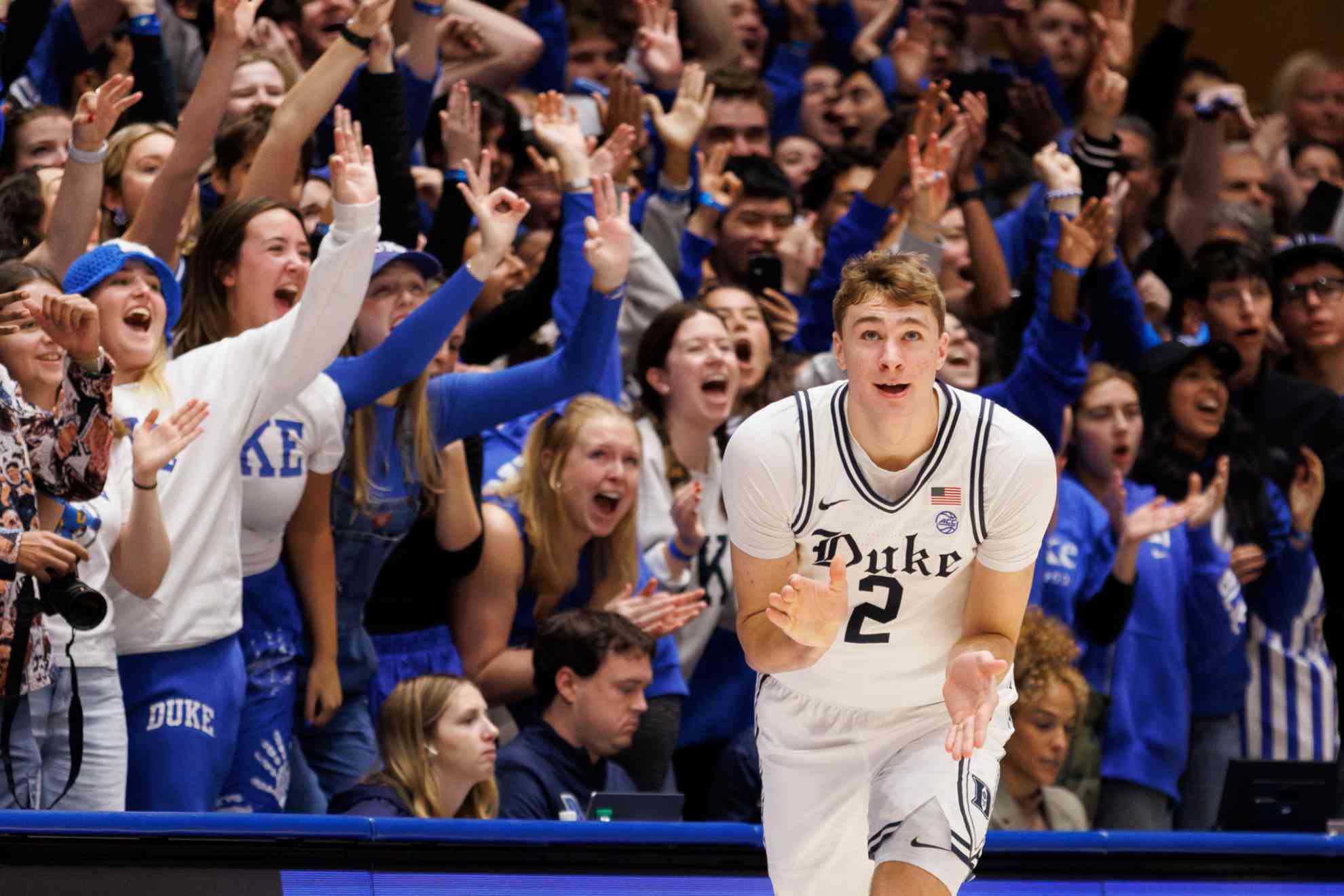

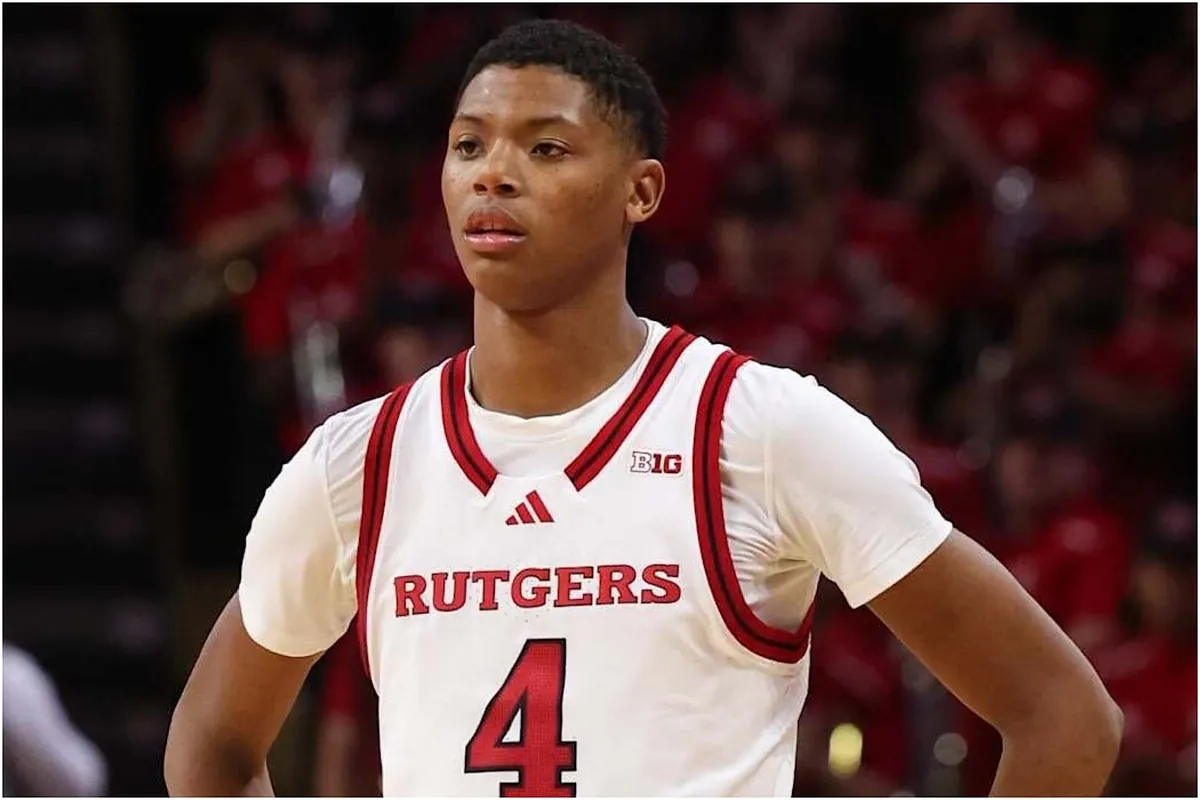
Long before he steps his foot on an NBA court, Airious “Ace” Bailey is making ridiculous money in college basketball.
The tall man from Rutgers, likely a top-10 pick in the 2025 NBA Draft, gets lots of eyes for his game skills and his top Name, Image, and Likeness (NIL) deals that grow his brand fast.
Cooper Flagg’s twin brother dominates rivals as he shows that he could be better than his brother
Bailey’s NIL portfolio
Sportskeeda states that Bailey’s NIL is worth somehwere around $1.6 million, one of the top in the country. His great dunks and good scores make him worth a lot, drawing big sponsors and fan groups.
Bailey’s two big NIL links are:
- Nike: The huge sport brand signed Bailey in late 2024, making him a key young star of the brand.
- Knights of The Raritan: A group at Rutgers that helps student-athletes with deals, fan love, and ads.
This mix of big and local branding helps Bailey get fans all over global social media and at Rutgers too.
Already a big name
Bailey has an average of 17.6 points and got 7.2 rebounds a game in his first year, with a high shot rate of 46%. His 39-point game against Indiana not only made national and international headlines but proved he is among the NBA-level players.
But, his path to the draft had some ups and downs. He missed some team workouts, which got some bad talk but did not hurt his spot much in NBA scout eyes. They still see great potential in him.
What’s Bailey’s worth?
There is no confirmed amount or guess of Bailey’s worth, but hints say his money from NIL and ads could possibly put him over a million dollars, a big thing for a college player.
Financial analysts think that once he reaches a good spot in the NBA, Bailey could make more through:
- A multi-million contract NBA deal
- More ad deals on top of Nike
- New investements, media moves, and social media profit
College players financial present
Bailey’s rise shows the big money shift in college sports made by NIL changes. Players can now make money from their brand while in school. This changes how recruits see college and shifts the basketball money game.
As the NBA Draft awaits, Bailey will likely be a top 10 pick. However, financially speaking, he’s already at the top.
NIL
Insider reveals NIL move that won over Texas Tech’s 5-star commit
The post Insider reveals NIL move that won over Texas Tech’s 5-star commit appeared first on ClutchPoints. Texas Tech football launched the biggest fireworks on the recruiting end for Fourth of July. Felix Ojo spurned multiple powers for the Red Raiders Friday. Becoming a rare five-star commit for the Lubbock university on the college football […]
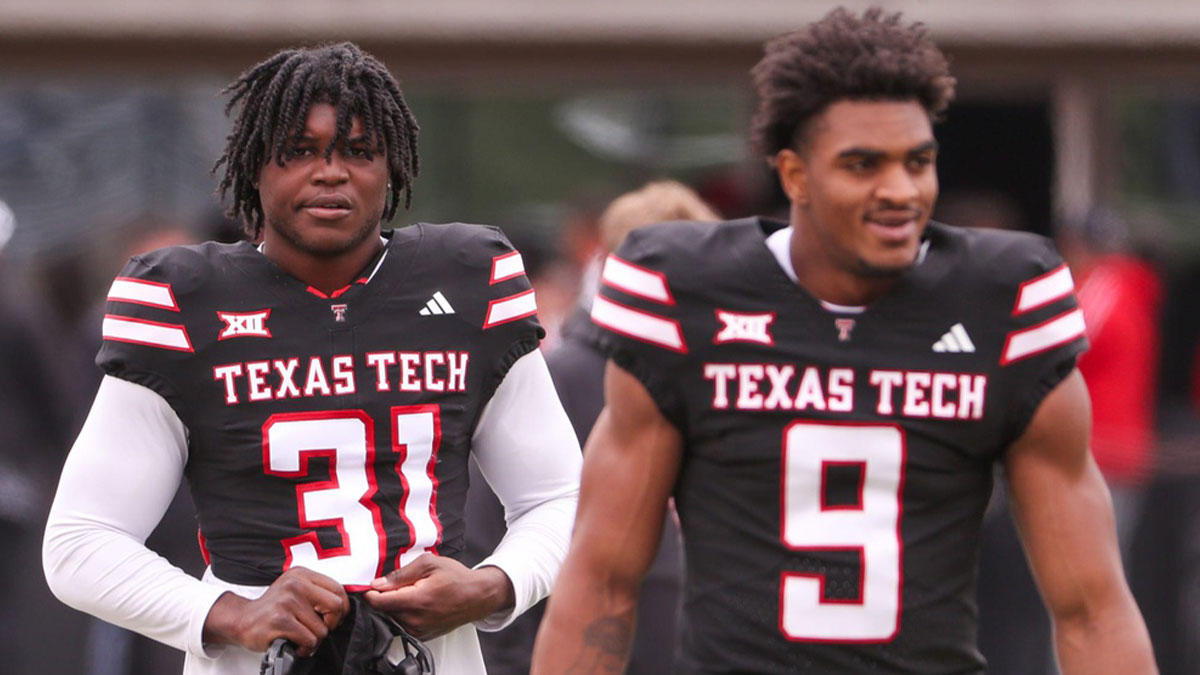
The post Insider reveals NIL move that won over Texas Tech’s 5-star commit appeared first on ClutchPoints.
Texas Tech football launched the biggest fireworks on the recruiting end for Fourth of July. Felix Ojo spurned multiple powers for the Red Raiders Friday. Becoming a rare five-star commit for the Lubbock university on the college football recruiting trail.
Advertisement
But how were the Red Raiders able to coax the dominating tackle? Especially with Texas, Michigan, Florida even defending national champion Ohio State all in the final mix for him?
Texas Tech turned to NIL money to convince Ojo that Lubbock is the place for him. The Athletic helped pull back the curtain on the Red Raiders courting Ojo.
Ojo agreed to a three-year, $2.3 million revenue-sharing contract, The Athletic revealed on Saturday. But the outlet also delivered clarity on one reported contract involving the Mansfield, Texas talent.
How much Felix Ojo could earn after joining Texas Tech recruiting class

Nathan Giese/Avalanche-Journal / USA TODAY NETWORK via Imagn Images
Ojo’s agent Derrick Shelby of Prestige Management spearheaded the NIL process for the newest Red Raider.
Advertisement
Turns out there was a contract figure that needed to be clarified by The Athletic.
“ESPN reported on Friday that Ojo was receiving a three-year deal worth $5.1 million, according to his agent, Derrick Shelby of Prestige Management. Shelby confirmed those figures to The Athletic on Saturday, but three Texas Tech sources refuted that number, with two confirming that Ojo is scheduled to receive an annual compensation of $775,000 per year for three years from Tech’s revenue-sharing pool,” the report reads.
There’s additional figures attached to Ojo. He received a verbal agreement “that can escalate the total value of the contract into the $5 million range.” However, that figure surfaces “if there were a large jump in the revenue sharing cap for schools or if there is minimal regulation of schools’ adhering to the cap.”
Ojo isn’t the only massive recruiting win. Four-star safety Donovan Webb spurned Michigan for Texas Tech on Wednesday. Webb originally was favored to land with the Wolverines per multiple outlets. Texas Tech is now 25th overall in the national recruiting rankings per 247Sports for the 2026 class.
Related: 5-star WR shockingly picks Syracuse over Michigan football
Related: Georgia football way-too-early bold predictions for 2025 season
NIL
Texas Tech took NiJaree Canady NIL approach with 2026 five-star OT Felix Ojo, but football is not softball
Texas Tech took the NiJaree Canady NIL approach with 2026 five-star OT Felix Ojo. But paying big, guaranteed money to a proven softball pitching transfer who can single-handedly control games as compared to paying big, guaranteed money to an incoming freshman offensive tackle is a totally different kind of risk, especially in the new era […]

Texas Tech took the NiJaree Canady NIL approach with 2026 five-star OT Felix Ojo. But paying big, guaranteed money to a proven softball pitching transfer who can single-handedly control games as compared to paying big, guaranteed money to an incoming freshman offensive tackle is a totally different kind of risk, especially in the new era of revenue sharing with student-athletes.
Tech is paying Ojo $2.325 million – guaranteed – for the next three years (an average of $775,000 per season), with a verbal agreement that Tech will renegotiate up to $5 million total if NIL money goes back to a Wild West setup, according to Matt Zenitz of CBS Sports.
Additional info on Texas Tech’s deal with new five-star offensive tackle commit Felix Ojo:
A source tells @cbssports it’s a three-year deal averaging $775,000 a year with a verbal understanding that Tech will renegotiate up to $5 million if things shift back to a Wild West setup https://t.co/YjrV9oQdSy pic.twitter.com/T2MqDjOrKQ
— Matt Zenitz (@mzenitz) July 4, 2025
This is the kind of high-risk, high-reward precedent Tech set with Canady, who got $1,050,024 to sign with Tech after her sophomore season at Stanford and helped Tech finish runner-up to Texas in the championship final of the Women’s College World Series last month.
Canady’s record deal for a softball player was staggering but came with managed risk considering she had already earned NFCA National Freshman of the Year at Stanford in 2023 and followed that up by being named USA Softball’s Collegiate Player of the Year in 2024 all while leading the Cardinal to two straight WCWS appearances.
A guaranteed deal of this size for an incoming freshman football player in the revenue-sharing era of college athletics is a significant risk and will undoubtedly lead to more agents for high-end high school recruits demanding big, multi-year guarantees.
NIL
Jasper Johnson shines in Team USA’s dismantling of New Zealand
Team USA’s U19 team continued their dominant run in the FIBA World Cup on Saturday in Switzerland. Now Kentucky guard Jasper Johnson will get a change to play for a gold medal on Sunday in this international event. Let’s just say it was a long night for New Zealand. On Fourth of July weekend, USA […]

Team USA’s U19 team continued their dominant run in the FIBA World Cup on Saturday in Switzerland. Now Kentucky guard Jasper Johnson will get a change to play for a gold medal on Sunday in this international event.
Let’s just say it was a long night for New Zealand. On Fourth of July weekend, USA basketball continued to roll with a 120-61 victory. We nearly got a Team USA by 90 result.
Jasper Johnson finished the blowout win with 14 points on 11 field goal attempts with three three-point field goals in 18 minutes on the floor. Team USA was plus-12 with Jasper on the floor.
The top-25 recruit continues to impress in this international event. Before Jasper’s big performance, the guard was averaging 7.4 points, 1.4 assists, 1.2 rebounds, and one steal in 14.6 minutes off the bench while shooting 42.1 percent (8-of-19) from long range. Jasper is now shooting 42.3 percent (11-of-26) from downtown in this event. Kentucky’s young guard has shown some offensive efficiency that should translate to the next level. Many in the college basketball online community are taking notice.
“If Jasper Johnson is hitting shots from deep, you are at his mercy. The Kentucky guard is so crafty off the bounce that if you have to close out tight, he’s tough to stay in front of,” Field of 68 analyst Terrence Oglesby wrote on Twitter/X on Saturday. “I think he’ll have some big games this year, but the physicality of the SEC is different.”
Jasper Johnson’s skill and scoring potential has shown up in Switzerland. Now we’ll need to see how the young player will transition to the physicality of college basketball but we know this potential diaper dandy can get buckets.
Team USA will face Germany on Sunday in the gold medal game. Tip-off is scheduled for 2:00 p.m. ET/1:00 p.m. CT.
NIL
The Sporting News ranks Big 10 quarterbacks first to last for 2025 season
An exciting season appears to be ahead in the Big Ten. After all, the conference has produced the last two national champions. Now going for a third consecutive title, some good quarterback play is going to be required. Thankfully, the Big Ten is stacked with quality players at the position. Ranking them from top to […]

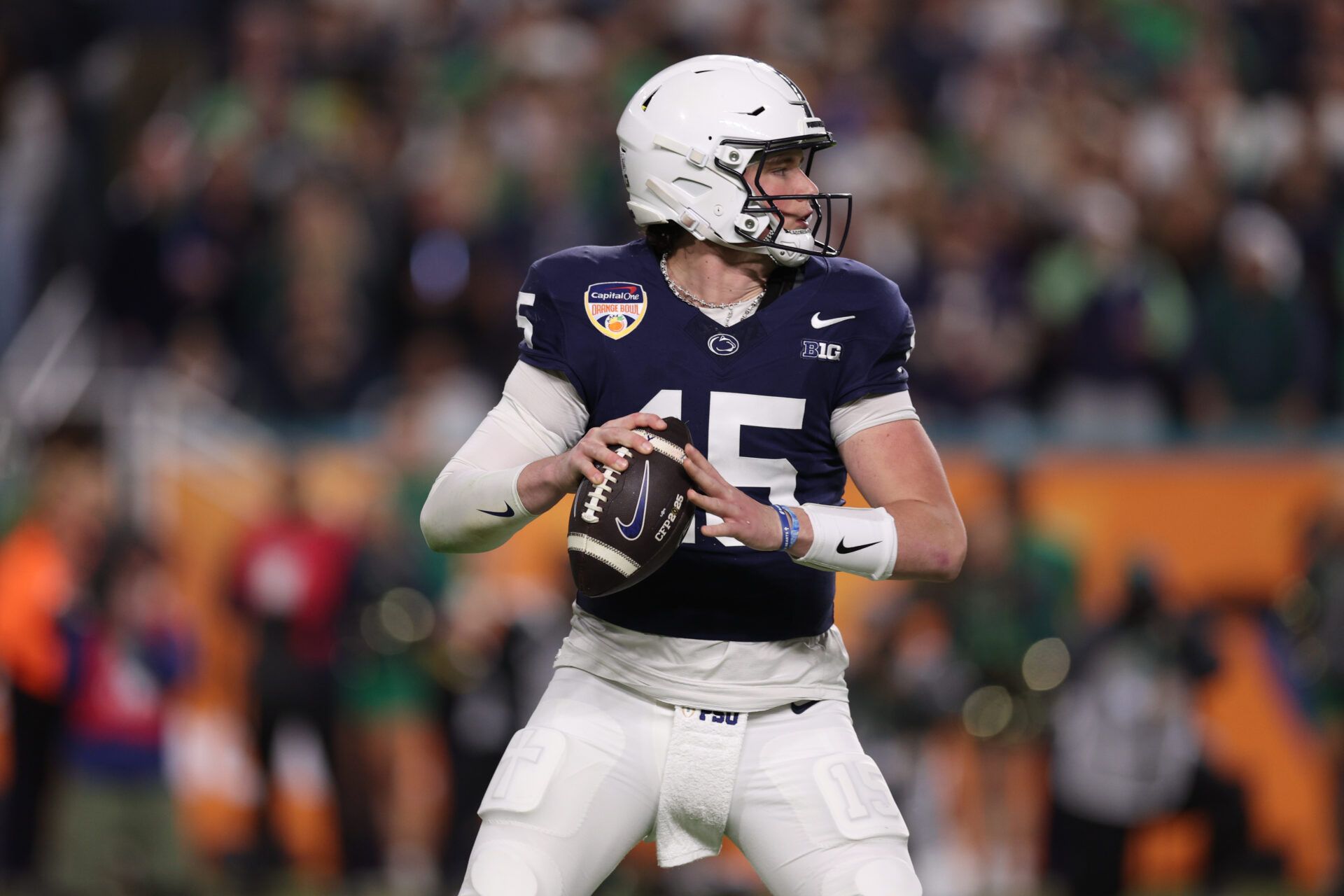
An exciting season appears to be ahead in the Big Ten. After all, the conference has produced the last two national champions. Now going for a third consecutive title, some good quarterback play is going to be required.
Thankfully, the Big Ten is stacked with quality players at the position. Ranking them from top to bottom is a tough task but the Sporting News took on the task. All 18 quarterbacks from one to 18, stretching coast-to-coast as the Big Ten does these days.
As much talent as there is, plenty of inexperience will be sprinkled throughout the conference. Being able to combine that with proven guys/projections is the key. That being said, let’s check out the Sporting News’ Big Ten quarterback rankings.
Allar deciding to come back to Penn State for another season instantly boosted the Nittany Lions to a preseason favorite. His spot as the Big Ten’s top quarterback likely does not come up against too many arguments.
Sporting News: “Allar – a three-year starter – received some draft buzz while leading the Nittany Lions to the CFP semifinals. He returned to school, and there should not be too many complaints.”
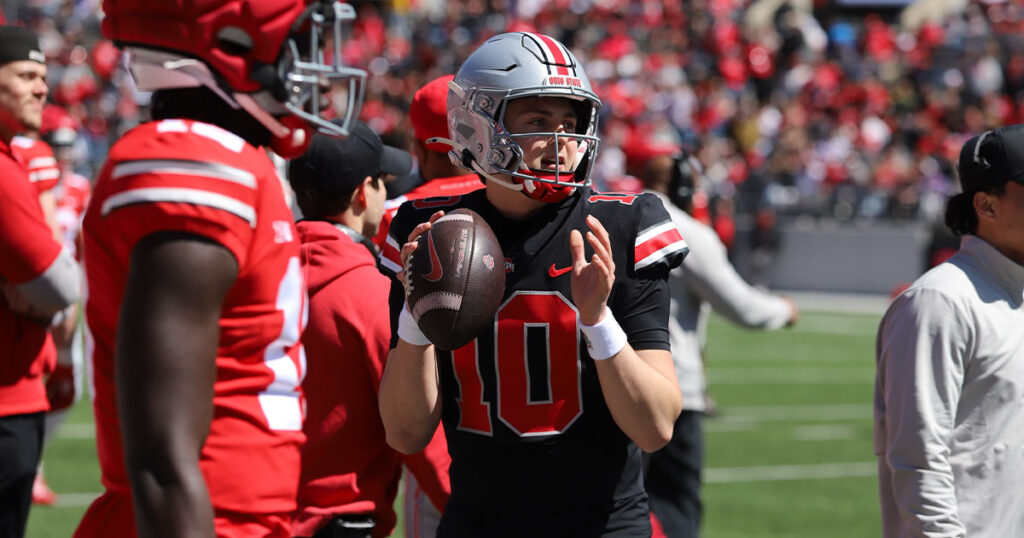
Ohio State head coach Ryan Day has yet to officially name a starting quarterback. However, the Sporting News not only expects Sayin to win out but also perform at quite a high level as well.
Sporting News: “Sayin – a redshirt freshman who transferred from Alabama after Nick Saban retired – was a five-star coming out of high school… (Lincoln) Kienholz has made a push for the starting job in spring practice, and coach Ryan Day likely will wait until fall camp to name a starter.”
Some serious College Football Playoff buzz is coming from Champaign. Altmyer figures to be the guy who will determine how far Illinois winds up going. Sporting News places him third overall, a solid spot for the Fighting Illini’s starter.
Sporting News: “Altmyer’s return is a huge reason why Illinois is being considered an early playoff sleeper team for 2025.”
Iamaleava spent this offseason as the top story in all of college football. He now settles into a new program at UCLA, hoping to just go out there and perform.
Sporting News: “Iamaleava is comparable to the next five-star QBs on this list, but he has enjoyed the most success on the field among those three QBs.”
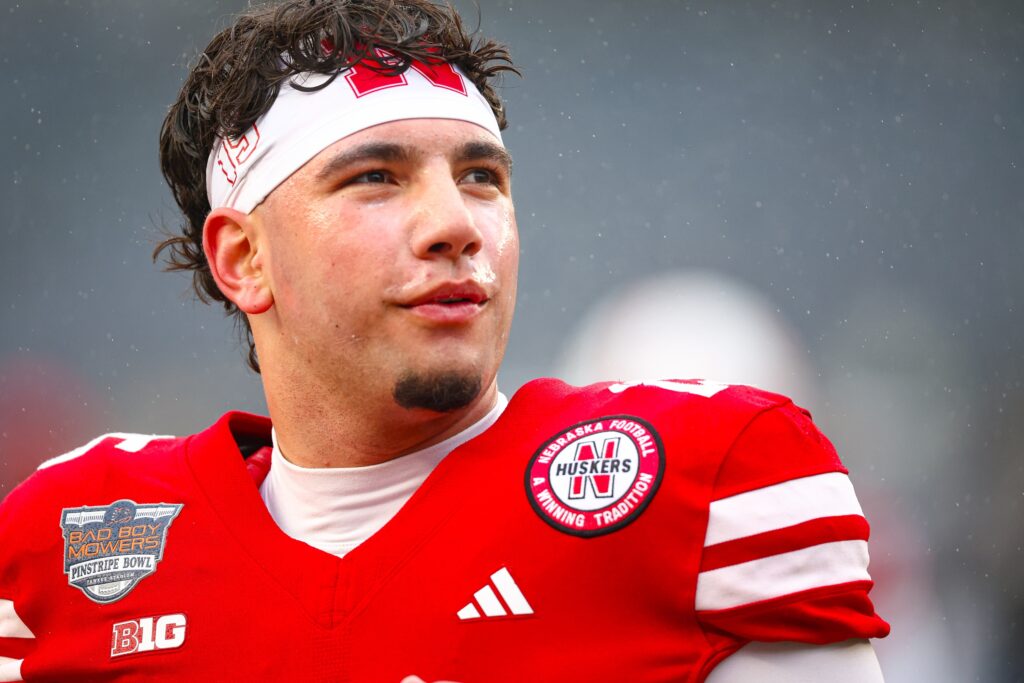
Raiola started the Big Ten quarterback’s youth movement last season, starting as a true freshman. Consistency will be needed by Matt Rhule this go-round, wanting to see massive strides during Raiola’s second year.
Sporting News: “There were ups and downs in his freshman year. Raiola did not have a 300-yard game, and he did finish with a conference-high 11 interceptions.”
There may not be a more discussed name leading into the season than Underwood. Someone who comes with a lot of hype during his recruitment, Michigan needs it to translate quickly for the true freshman.
Sporting News: “Underwood – the top quarterback in the 2025 recruiting class – remains the favorite to start. The 6-foot-4, 208-pound quarterback will have to hold off Mikey Keene, who started against Michigan for Fresno State in the opener last season.”
Moore made an unusual move in the NCAA transfer portal era, moving somewhere to be a backup. Time was spent behind Dillon Gabriel, learning the Oregon system. Whether or not the decision paid off will reveal itself quite quickly since the Ducks want to compete for another Big Ten title.
Sporting News: “Moore can be an efficient playmaker within the offense if he limits interceptions – which were a problem in his freshman year at UCLA.”
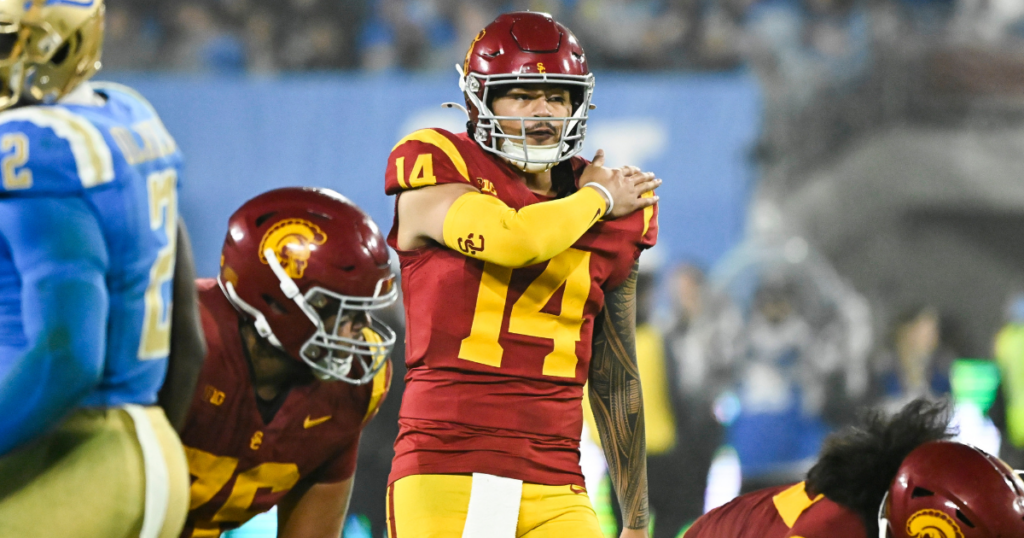
Lincoln Riley made the decision to move on from Miller Moss and fully install Maiava as the starter. Maiava now gets his chance to be the guy from the get-go as USC enters an important season.
Sporting News: “Maiava will have to improve on a 59.8% completion percentage this year, because the high-yield in a Riley offense is there in the Big Ten.”
Washington fans got a glimpse of what the future could be like in the final two games of 2024. The future has now arrived a few months later as Jedd Fisch gives Williams the nod.
Sporting News: “Williams is a 2025 breakout candidate if he can build on that strong finish from last year.”
Chiles followed the Michigan State coaching staff over from Oregon State, a huge win for the Spartans at the time. Now, he enters a second season as the starting quarterback, where improvements will be needed moving forward.
Sporting News: “Chiles had a bumpy first year as a starter with Jonathan Smith, but the second year at Michigan State should produce better results. Chiles flashed some play-making skills that led to the hype entering last season, but he struggled with turnovers against a brutal Big Ten schedule.”
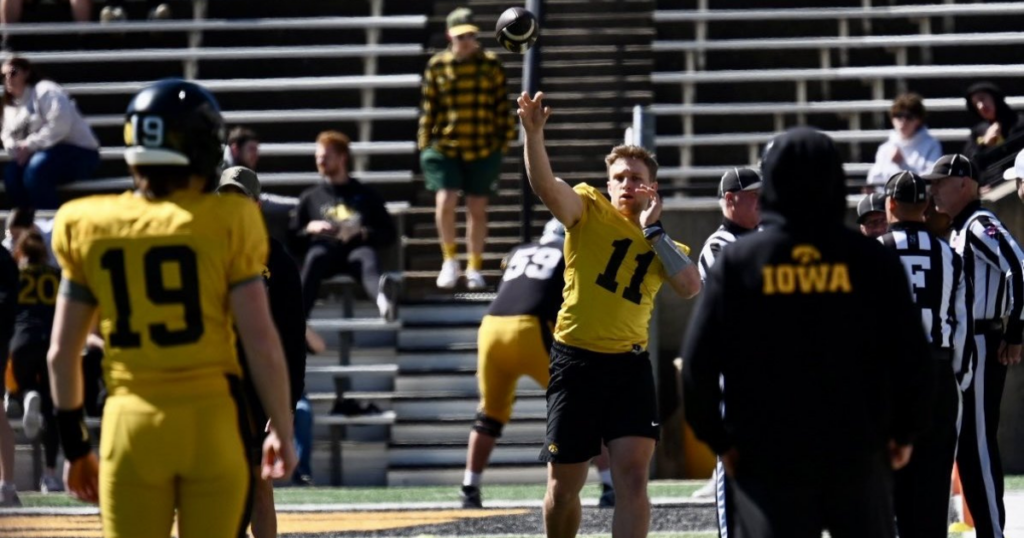
Iowa continues to search for answers at quarterback to improve the offense. Gronowski is an addition from the FCS ranks, hoping success from South Dakota State translates in the Big Ten.
Sporting News: “The Hawkeyes’ quarterback problems continued under long-time coach Kirk Ferentz… Will Gronowski change that? He won two FCS national championships at South Dakota State with 93 TDs and 20 interceptions.”
Sporting News found one area where Kaliakmanis needs to improve in 2025 — connecting with receivers at a higher clip. Taking care of the ball is already a strong suit and next steps are finishing with a better completion percentage.
Sporting News: “He had just one interception in Rutgers last four games, but he will need to improve on a 53.9% career completion percentage for the Scarlet Knights to move up the Big Ten pecking order.”
Curt Cignetti wants to get a little more quarterback magic out of the transfer portal. Mendoza may have a ceiling Indiana fans have not seen in a while, though, receiving first-round NFL Draft buzz.
Sporting News: “It’s another round of portal roulette, but Cignetti can make it work. We had the Hoosiers at No. 10 on this list last season.”
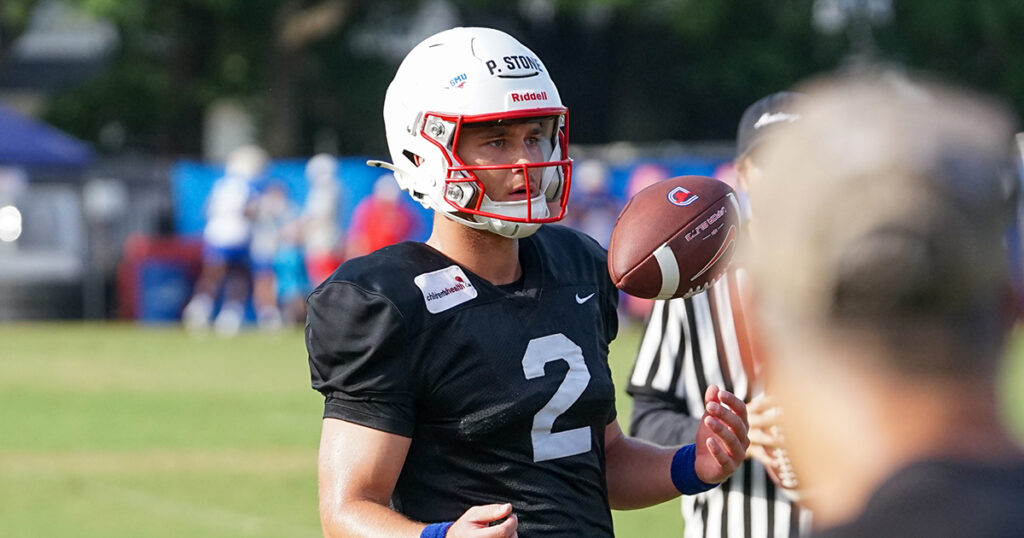
A starter at SMU to begin last season, Stone makes his way up to Chicagoland for another opportunity. This will be his final year of eligibility, looking to make the most of it at Northwestern.
Sporting News: “(Stone) gets a fresh start with third-year coach David Braun at Northwestern… He should fit well with second-year offensive coordinator Zach Lujan.”
Wisconsin has relied on transfer quarterbacks in years past, not finding much success. Everyone involved with the program hopes Edwards will be different — especially since he has Big Ten experience. Sporting News does not have much faith.
Sporting News: “It’s a complete reset at the position, and that means more unpredictable results.”
PJ Fleck has still not named a starting quarterback. No matter who goes out there, Minnesota does not have any starting experience on the roster. Lindsey slides down into the bottom three because of that, even if progress is expected.
Sporting News: “Lindsey is 4 of 5 for 50 yards and a TD in three appearances. He will improve under Fleck, but it will be a process.”
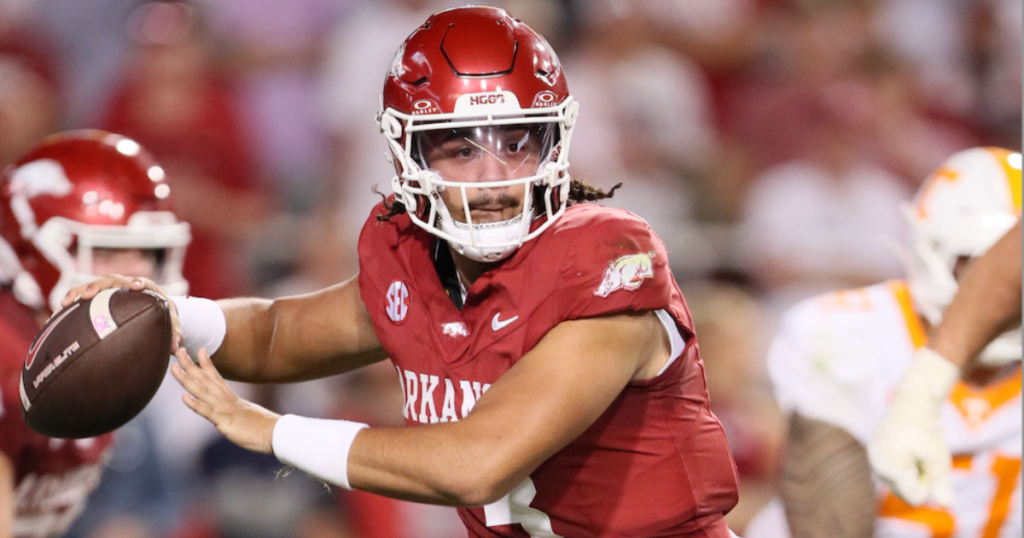
A lot of firsts are unfolding at Purdue this season, including head coach Barry Odom. He was able to land Singleton through the portal, somebody who got some run last season at Arkansas.
Sporting News: “(Singleton) should develop with new offensive coordinator Josh Henson, who was at USC the last three seasons.”
One of multiple UCLA quarterbacks who left this offseason, Martin made a trip across the country for his next spot. Sporting News believes there might be some competition from a true freshman.
Sporting News: “Martin made one start last season, and he passed for 167 yards and a TD at Penn State. Martin will have to hold off four-star freshman Malik Washington.”
NIL
5-star commit’s NIL deal revealed
Texas Tech football launched the biggest fireworks on the recruiting end for Fourth of July. Felix Ojo spurned multiple powers for the Red Raiders Friday. Becoming a rare five-star commit for the Lubbock university on the college football recruiting trail. But how were the Red Raiders able to coax the dominating tackle? Especially with Texas, […]
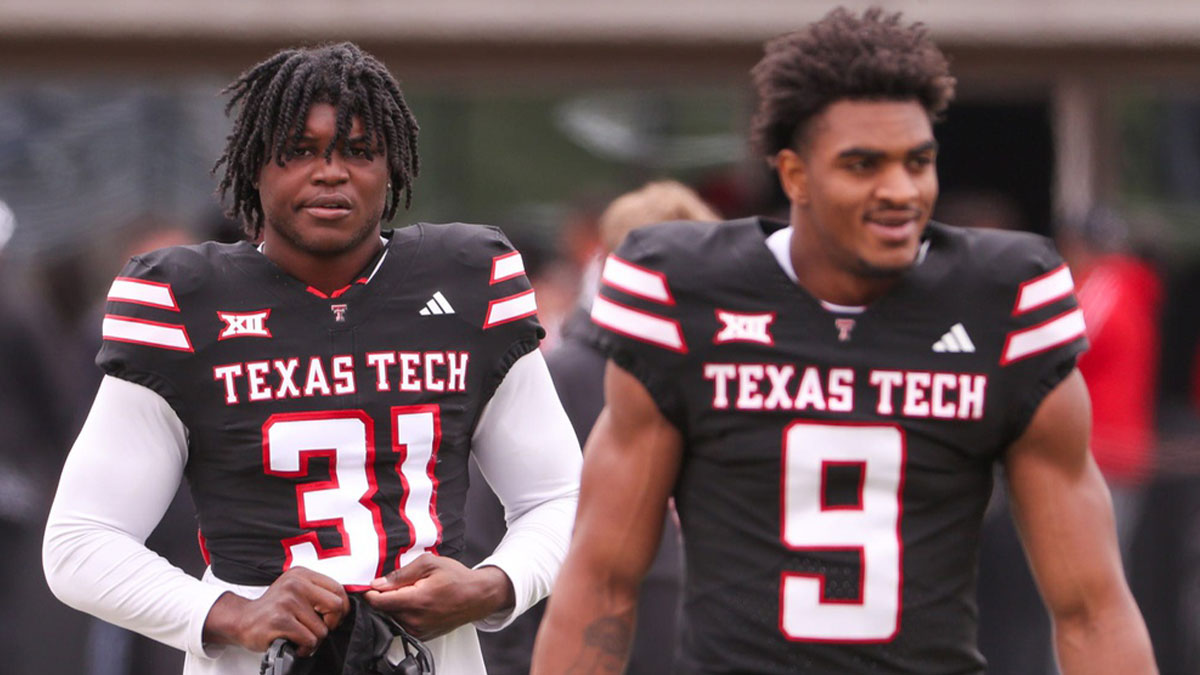
Texas Tech football launched the biggest fireworks on the recruiting end for Fourth of July. Felix Ojo spurned multiple powers for the Red Raiders Friday. Becoming a rare five-star commit for the Lubbock university on the college football recruiting trail.
But how were the Red Raiders able to coax the dominating tackle? Especially with Texas, Michigan, Florida even defending national champion Ohio State all in the final mix for him?
Texas Tech turned to NIL money to convince Ojo that Lubbock is the place for him. The Athletic helped pull back the curtain on the Red Raiders courting Ojo.
Ojo agreed to a three-year, $2.3 million revenue-sharing contract, The Athletic revealed on Saturday. But the outlet also delivered clarity on one reported contract involving the Mansfield, Texas talent.
How much Felix Ojo could earn after joining Texas Tech recruiting class
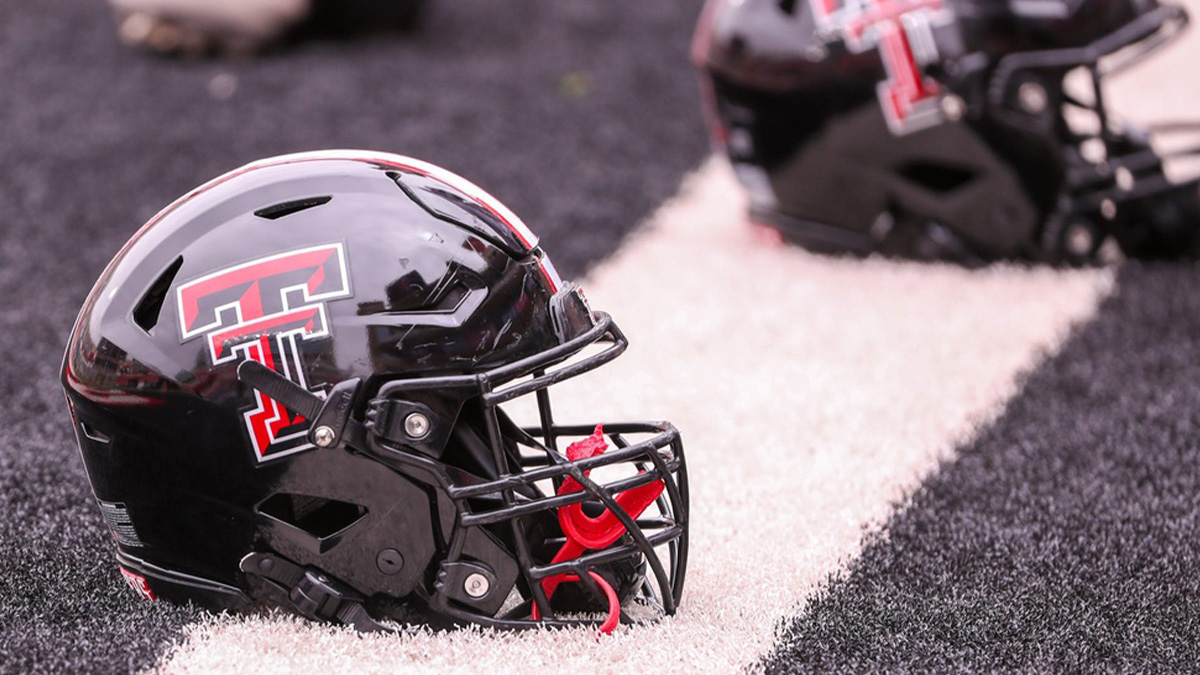
Ojo’s agent Derrick Shelby of Prestige Management spearheaded the NIL process for the newest Red Raider.
Turns out there was a contract figure that needed to be clarified by The Athletic.
“ESPN reported on Friday that Ojo was receiving a three-year deal worth $5.1 million, according to his agent, Derrick Shelby of Prestige Management. Shelby confirmed those figures to The Athletic on Saturday, but three Texas Tech sources refuted that number, with two confirming that Ojo is scheduled to receive an annual compensation of $775,000 per year for three years from Tech’s revenue-sharing pool,” the report reads.
There’s additional figures attached to Ojo. He received a verbal agreement “that can escalate the total value of the contract into the $5 million range.” However, that figure surfaces “if there were a large jump in the revenue sharing cap for schools or if there is minimal regulation of schools’ adhering to the cap.”
Ojo isn’t the only massive recruiting win. Four-star safety Donovan Webb spurned Michigan for Texas Tech on Wednesday. Webb originally was favored to land with the Wolverines per multiple outlets. Texas Tech is now 25th overall in the national recruiting rankings per 247Sports for the 2026 class.
NIL
College sports has a soft salary cap now. How does it work?
College sports has another before and afterdate. Before July 1, 2025 – this Tuesday – athletes could make money off their name, image and likeness (NIL) but not be paid directly by their schools. And after July 1, that has changed, making college sports look and feel even more like the pros. Some of the […]
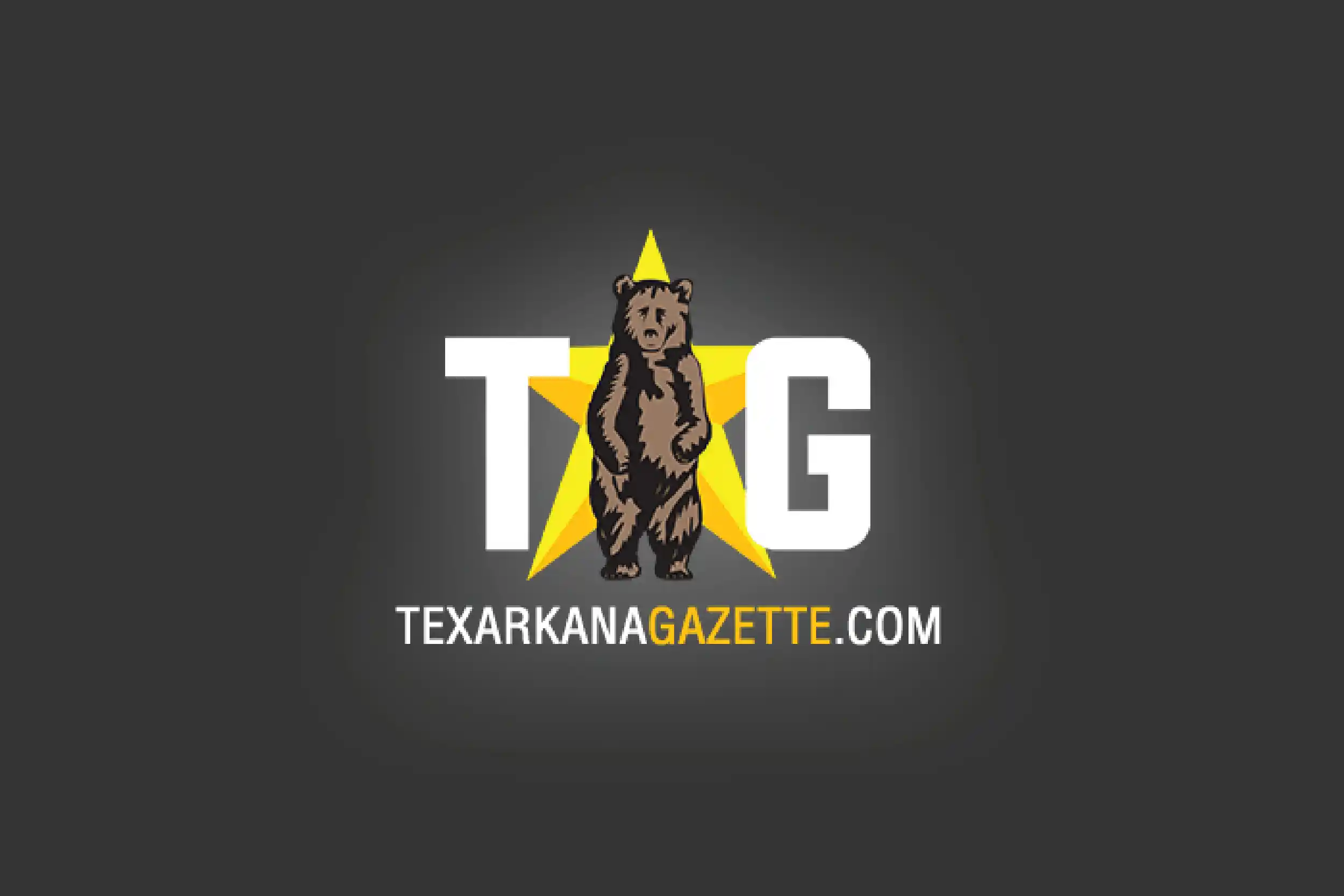
College sports has another before and afterdate.
Before July 1, 2025 – this Tuesday – athletes could make money off their name, image and likeness (NIL) but not be paid directly by their schools. And after July 1, that has changed, making college sports look and feel even more like the pros.
Some of the long-standing differences and caveats still apply. College athletes are not considered employees. Therefore, unlike athletes in the NFL, the NBA, the WNBA, the NHL and MLB, their pay and working conditions were not established through a collective bargaining process. But at least one major change will be familiar to any fan of those professional leagues.
College sports has a (soft) salary cap now. Let’s unpack.
HOW DID THIS COME ABOUT?
At the most practical level, the soft salary cap (or revenue sharing cap) is part of the massive legal settlement approved in early June. Commonly referred to as the House settlement, it consolidated three antitrust cases, all of them challenging past restrictions of college athlete compensation. And in that process, the defendants – the NCAA and the power conferences – agreed to allow schools to share revenue with (or pay) athletes directly for the first time. That officially started Tuesday.
Lawyers for the defendants and plaintiffs settled on an initial annual cap of $20.5 million per school. That is for athletes across sports, though a bulk of the money will go to salaries for football and men’s basketball players. Not every school will spend to the cap, though many power conference programs will. More than 300 Division I schools have opted into the new economic model, meaning they can pay athletes – up to that cap – but also have to abide by new roster limits in each sport. Schools that chose not to opt in are not allowed to pay athletes through revenue sharing. For now, this cap explainer is not relevant to them.
WHY $20.5 MILLION?
The starting cap was calculated by taking 22 percent of the average athletic revenue for power conference schools. In this case, the figures were from the 2023 and 2024 fiscal years. Importantly, only a specific set of revenue streams was considered, which has the attention of the plaintiffs’ attorneys for House. Each year, the settlement will require the NCAA to share the data used to calculate the cap with the plaintiffs’ attorneys. From there, the settlement permits the attorneys to “reasonably audit” the data – and this week, Steve Berman, one of the lead attorneys, told USA Today they are doing just that. In question is whether certain revenue streams were not counted and should be, which could increase the initial number.
Berman told USA Today that he is fine with going ahead with $20.5 million for 2025-26. But if the number were recalculated in an auditing process …
… THAT WOULD BE SIGNIFICANT. WHY?
Great question. Perfect time to ask.
The settlement is a 10-year agreement. The cap will rise and recalculate throughout that span. There will be a 4 percent bump before the second, third, fifth, sixth, eighth and ninth years. There will be a recalculation, using that same 22 percent formula, before the fourth, seventh and 10th years. So if the baseline changed because of an immediate audit of the $20.5 million figure, there could be a trickle-down (or trickle-up?) effect on the initial annual increases.
WHAT COUNTS AS SPENDING TOWARD THE CAP?
Three streams: revenue-sharing money paid to athletes, which will essentially function as salaries; scholarship spending above previous NCAA limits; and other education-related payments, known as Alston money.
Alston money can account for up to $2.5 million per year toward the cap. Same with scholarship spending, though that part is a bit trickier to explain. The settlement permits schools to pay an uncapped amount of scholarship money to a fixed number of athletes across sports. Or in other words: Previous limits on scholarship spending have been replaced by new roster limits, meaning more money distributed to fewer athletes. A football team, for example, can carry a maximum of 105 players and offer 105 full scholarships, if it so chooses. But as far as the $20.5 million cap is concerned, only scholarship money spent above previous NCAA limits – and only up to $2.5 million per year – will count toward it. Confused? Welcome to the life of a longtime college compliance staffer.
WHY HAVE YOU REPEATEDLY REFERRED TO THIS AS A SOFT CAP?
Another great question.
Until this point – before July 1, 2025 – boosters funded five-, six- and seven-figure salaries in football, men’s basketball and, to a lesser extent, women’s basketball and other sports. With rules established by the settlement, the NCAA and the power conferences hope to change that. Any NIL deal that exceeds $600 will have to go through a clearinghouse, which will trigger a review of who is paying and what services they will receive from the athlete, among other factors. The hope, for the leaders of college sports, is to eliminate situations in which an athlete receives $500,000 for a few social media posts.
At the highest levels of the biggest sports, those deals have fueled the NIL economy for the past four years. Donor groups, known as NIL collectives, typically have brokered them. Many legal experts are skeptical that the enforcement efforts would hold up against more antitrust suits.
And throughout the history of college sports, there’s at least one certainty: Motivated rich people will find a way to help their teams win. For that reason – that donors and NIL collectives will help schools spend above the $20.5 million barrier – it feels most responsible to call it a soft cap. The whole system could put at least some athlete payments back under the table, such as when they used to be delivered in McDonald’s bags before the NCAA changed its NIL rules in 2021.Plus, beyond donor money, schools and collectives can still help athletes land brand deals to enhance their income.
At the top of college football and basketball, spending from the revenue-sharing pool will be viewed as a baseline. It will, as ever, take a lot more money to thrive.
-

 College Sports1 week ago
College Sports1 week agoWAC to Rebrand to UAC, Add Five New Members in 2026
-

 Technology3 weeks ago
Technology3 weeks agoPolar is teasing a Whoop alternative without subscription
-

 Motorsports6 days ago
Motorsports6 days agoWhy Cosmetics are Making Up for Lost Time in Women’s Sports
-

 Technology3 weeks ago
Technology3 weeks agoI loved the Whoop MG, but didn’t love the price: that’s why I’m excited about this mysterious new fitness band from a major Garmin rival
-

 NIL3 weeks ago
NIL3 weeks agoGo Straight to Collective Bargaining (Part II) ✦ OnLabor
-

 College Sports3 weeks ago
College Sports3 weeks agoLocked On Women's Basketball
-

 Professional Sports2 weeks ago
Professional Sports2 weeks agoAlex Pereira responds to rumors of UFC heavyweight title fight with threatening message
-
College Sports2 weeks ago
Women's Basketball Thanks Shannon LeBeauf for 14 Seasons
-

 Technology1 week ago
Technology1 week agoPet fitness and wellness trends for a healthier and happier dog
-

 College Sports2 weeks ago
College Sports2 weeks agoAlabama Basketball



































